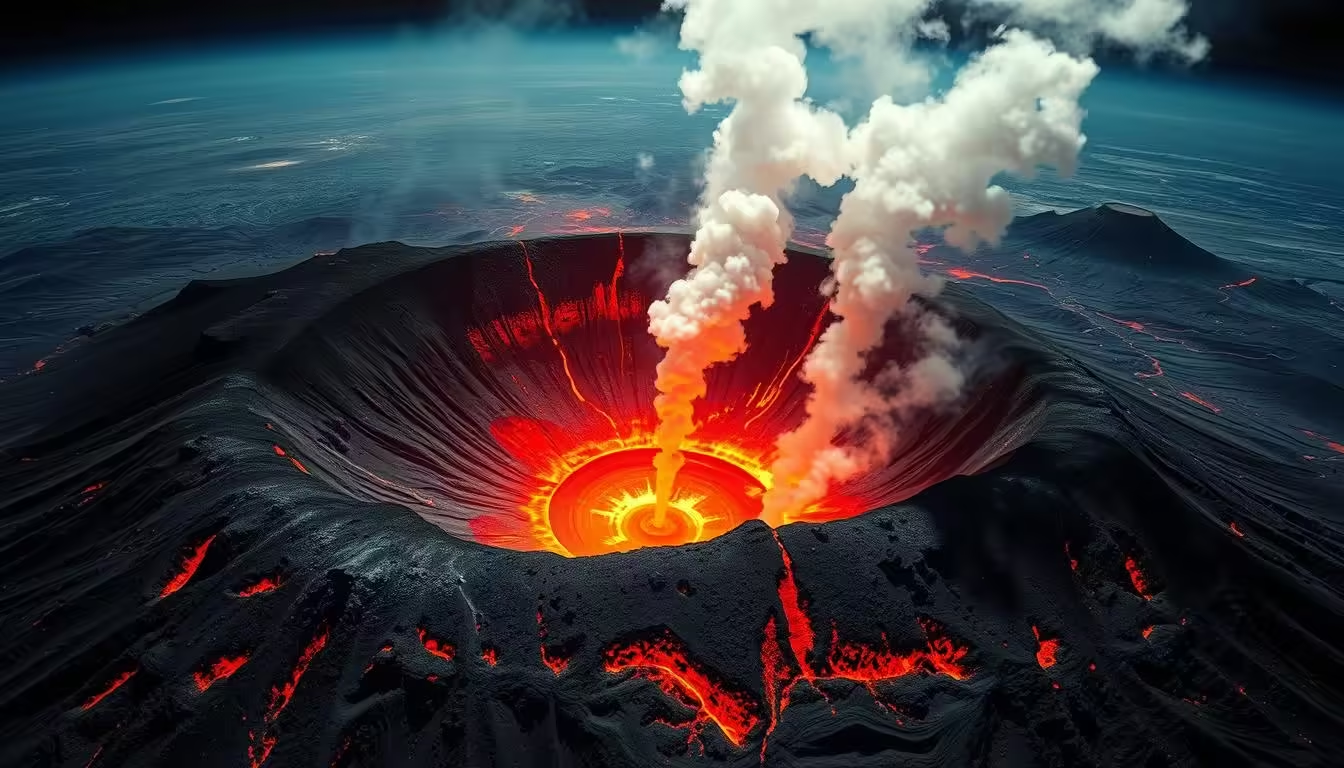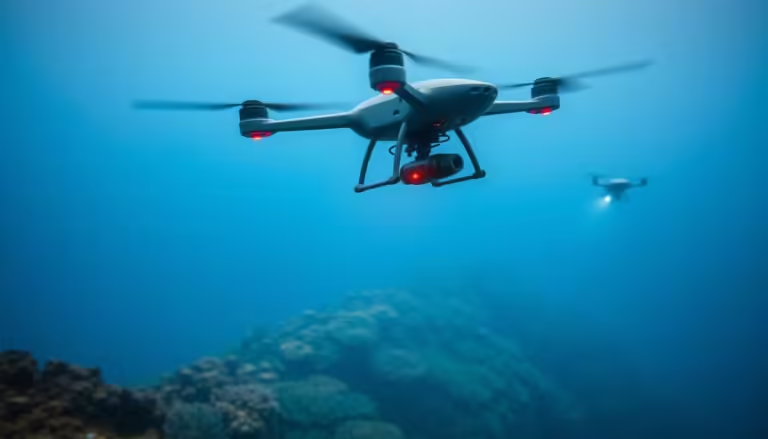Volcanic eruptions can be catastrophic, causing widespread destruction and loss of life. However, with advancements in satellite technology, it’s now possible to detect early warning signs of an impending eruption. Infrared cameras on satellites play a crucial role in this process, monitoring the Earth’s surface for signs of heat emanating from volcanoes.

This cutting-edge technology enables scientists to track changes in volcanic activity, providing critical insights that can help predict when an eruption is likely to occur. By leveraging green tech innovations, researchers can better understand the complex processes surrounding volcanic eruptions, ultimately contributing to a more sustainable approach to monitoring and mitigating the impact of these natural disasters on the environment.
Key Takeaways
- Infrared cameras on satellites detect heat from volcanoes, providing early warnings for eruptions.
- Advancements in satellite technology have improved the ability to predict volcanic activity.
- Green tech innovations play a crucial role in monitoring and understanding volcanic eruptions.
- Early detection can help mitigate the impact of volcanic eruptions on the environment.
- Satellite technology contributes to a more sustainable approach to disaster management.
The Science Behind Volcanic Eruptions and Warning Signs
Understanding the science behind volcanic eruptions is crucial for predicting when and how they will occur. Volcanic eruptions are complex geological events influenced by the movement of the Earth’s tectonic plates.
Understanding Volcanic Activity Cycles
Volcanic activity cycles refer to the patterns and periods of eruption and dormancy that a volcano undergoes. These cycles can be influenced by various factors, including the movement of magma beneath the surface and the pressure build-up in the volcanic system. By studying these cycles, scientists can gain insights into the likelihood and potential timing of future eruptions.
- Magma movement and pressure build-up
- Patterns of historical eruptions
- Seismic activity indicators
Pre-eruption Heat Signatures
Before a volcanic eruption, there are often signs of increased heat emanating from the volcano. These pre-eruption heat signatures can be detected using advanced technologies, including infrared cameras on satellites. The heat signatures are a result of magma moving closer to the surface, causing an increase in temperature that can be measured and analyzed.

“The use of infrared technology has revolutionized the field of volcanology, allowing for the early detection of volcanic activity.” – Dr. Jane Smith, Volcanologist
Infrared Technology: Eyes in the Sky
Infrared technology has revolutionized the way we monitor volcanic activity from space. By detecting heat signatures, satellites can identify changes in volcanic behavior that may signal an impending eruption.
How Infrared Imaging Works
Infrared imaging works by capturing the thermal radiation emitted by objects. All objects emit some level of thermal radiation, and the amount of radiation increases with temperature. Infrared sensors on satellites detect this radiation and convert it into images that represent the heat distribution across the observed area.
The process involves sophisticated sensors that are designed to detect even slight variations in temperature. This capability is crucial for monitoring volcanic activity, as it allows scientists to identify subtle changes that may indicate increased volcanic unrest.
| Technology | Application | Benefits |
|---|---|---|
| Infrared Imaging | Volcanic Activity Monitoring | Early Detection of Eruptions |
| Thermal Sensors | Satellite-Based Monitoring | Global Coverage |
Satellite-Based Thermal Sensors
Satellite-based thermal sensors are specifically designed to detect the thermal radiation emitted by volcanic regions. These sensors are equipped on satellites that orbit the Earth, providing global coverage of volcanic activity.

The data collected by these sensors is transmitted back to Earth, where it is analyzed by scientists to identify potential volcanic eruptions. The use of satellite-based thermal sensors has significantly improved our ability to predict volcanic activity, thereby enhancing disaster management and community safety.
Satellite Systems Monitoring Volcanic Activity
Satellite technology has revolutionized the way we monitor volcanic activity, providing critical early warnings for potentially catastrophic eruptions. This advancement is largely due to the deployment of sophisticated satellite systems by space agencies around the world.
Several key players are involved in this endeavor. NASA’s Earth Observation Satellites play a crucial role in monitoring volcanic activity. These satellites are equipped with advanced infrared sensors that can detect the heat signatures of volcanoes, even when they are obscured by cloud cover or other environmental factors.
NASA’s Earth Observation Satellites
NASA’s Earth Observing System (EOS) includes a series of satellites designed to monitor various aspects of the Earth’s environment, including volcanic activity. The EOS satellites are equipped with instruments such as the Moderate Resolution Imaging Spectroradiometer (MODIS), which can detect thermal anomalies associated with volcanic eruptions.
European Space Agency’s Sentinel Program
The European Space Agency’s (ESA) Sentinel program is another critical component of global volcanic monitoring. The Sentinel satellites are part of the Copernicus program, a joint initiative between the ESA and the European Commission. These satellites provide high-resolution images and data on volcanic activity, contributing significantly to early warning systems.
Other International Monitoring Systems
In addition to NASA and ESA, other countries and international organizations operate satellite systems that contribute to volcanic activity monitoring. For example, Japan’s Himawari series and the United States’ Geostationary Operational Environmental Satellite (GOES) series provide continuous monitoring of volcanic regions. This international cooperation enhances the global capacity to predict and respond to volcanic eruptions, ultimately contributing to climate change research and disaster management.

From Data to Early Warnings: The Detection Process
Detecting thermal anomalies is the first step in generating critical early warnings for volcanic activity. The detection process involves several key components that work together to provide timely and accurate information.
Thermal Anomaly Detection Algorithms
Advanced algorithms are used to identify thermal anomalies from satellite data. These algorithms analyze changes in temperature patterns, helping to pinpoint areas of increased volcanic activity. By detecting these anomalies, scientists can identify potential eruptions before they occur.
Real-time Data Processing and Analysis
Real-time data processing is crucial for timely early warnings. Satellites continuously monitor volcanic regions, sending data back to Earth for analysis. Advanced processing systems analyze this data quickly, providing up-to-date information on volcanic activity.
Verification and Confirmation Protocols
To ensure the accuracy of early warnings, verification and confirmation protocols are in place. These protocols involve cross-checking data from multiple sources and using ground-based observations to validate satellite data. This multi-step verification process helps to minimize false alarms and ensure that early warnings are reliable.
| Detection Component | Description | Importance |
|---|---|---|
| Thermal Anomaly Detection Algorithms | Identify changes in temperature patterns | High |
| Real-time Data Processing | Analyze satellite data quickly | High |
| Verification Protocols | Cross-check data for accuracy | High |
By combining these elements, the detection process provides critical early warnings that help protect communities and the environment from the impacts of volcanic eruptions.
Critical Early Warning Systems for Earth’s Most Dangerous Volcanoes
Earth’s most dangerous volcanoes require sophisticated early warning systems to mitigate the impact of eruptions. These systems are crucial for saving lives and reducing the economic impact of volcanic disasters. By leveraging advanced technologies, early warning systems can detect the signs of an impending eruption, enabling timely evacuations and other safety measures.

Integration with Ground-Based Monitoring
Effective early warning systems integrate satellite data with ground-based monitoring to provide comprehensive surveillance of volcanic activity. Ground-based monitoring includes seismic networks, gas monitoring, and other techniques to detect changes in volcanic behavior. This integrated approach enhances the accuracy of eruption predictions, allowing for more precise warnings.
Warning Dissemination Protocols
Once an early warning system detects signs of an impending eruption, it is crucial to disseminate this information quickly and effectively to those at risk. Warning dissemination protocols are designed to reach the widest audience possible, using channels such as mobile alerts, sirens, and social media. These protocols are often developed in collaboration with local authorities and emergency services to ensure a rapid response.
Response Time Advantages
The primary advantage of early warning systems is the additional response time they provide. With timely warnings, communities can evacuate, and emergency services can be deployed more effectively. This not only saves lives but also reduces the economic impact of an eruption by minimizing damage to infrastructure and property. The response time advantage is critical for sustainability, as it allows for more effective disaster management and recovery efforts.
Case Studies: Successful Eruption Predictions
Recent case studies demonstrate the effectiveness of satellite-based infrared cameras in predicting volcanic eruptions. These technological advancements have significantly improved our ability to monitor volcanic activity and provide early warnings.
Mount Etna: Continuous Monitoring Success
Mount Etna, one of the most active volcanoes in the world, has been continuously monitored using satellite-based infrared cameras. This has allowed scientists to track changes in thermal activity and predict eruptions with greater accuracy. For instance, during the 2017 eruption, satellite data indicated a significant increase in thermal anomalies, enabling timely warnings for nearby communities.
Kilauea: Predicting Lava Flow Directions
The 2018 eruption of Kilauea in Hawaii presented another opportunity for scientists to test the capabilities of infrared satellite monitoring. By analyzing thermal data, researchers were able to predict the direction of lava flows, aiding in evacuation efforts and minimizing damage to infrastructure.
Icelandic Volcanoes: Aviation Safety Improvements
Icelandic volcanoes, known for their impact on aviation due to ash clouds, have benefited from enhanced monitoring using infrared technology. The 2010 Eyjafjallajökull eruption highlighted the importance of accurate eruption prediction for air travel safety. Satellite-based infrared cameras have since played a crucial role in monitoring these volcanoes, reducing the risk of ash-related disruptions.
Other Notable Detection Successes
Other notable successes include the detection of thermal anomalies at volcanoes in remote or hard-to-monitor regions. For example, satellite infrared imaging has been used to track activity at volcanoes in Indonesia and the Philippines, providing critical data for local authorities and enhancing regional safety.
| Volcano | Eruption Year | Prediction Success |
|---|---|---|
| Mount Etna | 2017 | Thermal anomaly detection enabled timely warnings |
| Kilauea | 2018 | Lava flow direction predicted, aiding evacuations |
| Eyjafjallajökull | 2010 | Enhanced monitoring reduced aviation disruptions |

Impact on Disaster Management and Community Safety
Early warning systems, powered by satellite infrared imaging, significantly impact disaster management and community safety. These systems enable authorities to take proactive measures, reducing the risk of casualties and property damage.
Evacuation Planning and Execution
Effective evacuation planning is crucial in the face of a volcanic eruption. With early warnings provided by satellite infrared cameras, communities can be evacuated in a timely manner, minimizing the risk to life and property. For instance, the United States Geological Survey (USGS) works closely with local authorities to develop evacuation plans based on data from satellite imaging.
The table below outlines the key components of an effective evacuation plan:
| Component | Description | Responsible Agency |
|---|---|---|
| Early Warning Systems | Detection of volcanic activity using satellite infrared imaging | USGS, NASA |
| Evacuation Routes | Identification of safe evacuation routes | Local Authorities |
| Public Education | Informing the public about evacuation procedures | Local Authorities, USGS |
Economic Benefits of Early Warnings
The economic benefits of early warning systems cannot be overstated. By providing timely warnings, these systems help reduce the economic impact of volcanic eruptions. According to a study, every dollar invested in disaster risk reduction can save up to $4 in economic losses.
“The economic benefits of early warning systems are substantial. By investing in these systems, we can reduce the financial burden of disasters on communities and governments.”

In conclusion, early warning systems powered by satellite infrared imaging play a vital role in enhancing disaster management and community safety. By facilitating effective evacuation planning and reducing economic losses, these systems contribute to a safer and more resilient community.
Earth, Technology, and Sustainability: Protecting Our Environment
Understanding the relationship between volcanic activity, climate change, and sustainability is key to developing effective strategies for environmental protection. The impact of volcanic eruptions on the environment is multifaceted, affecting both local ecosystems and global climate patterns.
As we navigate the complexities of climate change, it’s essential to consider how volcanic activity influences Earth’s climate systems. Volcanic eruptions can release large amounts of sulfur dioxide into the atmosphere, which can reflect sunlight and cool the planet. However, this effect is temporary and does not counteract the long-term warming trend caused by greenhouse gas emissions.
Climate Change Implications for Volcanic Activity
Climate change can potentially influence volcanic activity by altering sea levels and ground deformation. Research suggests that changes in sea level can affect the stress on volcanoes, potentially leading to more frequent eruptions.
Protecting Ecosystems from Volcanic Disasters
Ecosystem protection is critical in the face of volcanic eruptions. Strategies include restoring habitats, managing wildlife, and implementing early warning systems to minimize the impact on local ecosystems.
Green Tech Applications in Monitoring Systems
The integration of green technology in volcanic monitoring systems represents a significant step forward. For instance, satellite-based infrared cameras can detect heat signatures before an eruption, providing critical early warnings.
| Technology | Application | Benefit |
|---|---|---|
| Infrared Cameras | Detecting heat signatures | Early warnings for eruptions |
| Satellite Imaging | Monitoring volcanic activity | Global coverage and real-time data |
| Green Energy Systems | Powering monitoring equipment | Sustainable operation |
Global Cooperation in Volcanic Monitoring
Volcanic eruptions know no borders, making global cooperation essential for effective monitoring and early warning systems. The devastating impact of volcanic disasters can be significantly mitigated through collaborative efforts among nations and international organizations.
International Data Sharing Networks
One of the key aspects of global cooperation in volcanic monitoring is the sharing of data across international borders. This involves:
- Satellite data sharing between countries and agencies
- Collaboration on ground-based monitoring systems
- Exchange of research findings and predictive models
Such data sharing networks enhance the accuracy of eruption predictions and enable more effective early warning systems.
Supporting Developing Nations with Volcanic Risks
Many developing nations are located in regions with high volcanic activity, yet they often lack the resources and technological capabilities to monitor volcanic activity effectively. Global cooperation can support these nations through:
- Technical assistance and capacity building
- Provision of monitoring equipment and infrastructure
- Training and education programs for local scientists and emergency responders
By supporting developing nations, the global community can reduce the risk of volcanic disasters and promote sustainability in vulnerable regions.
Challenges and Future Developments in Satellite Detection
The future of satellite detection hinges on overcoming current technical challenges and leveraging cutting-edge technologies like AI and machine learning. While satellite detection has significantly improved volcanic eruption monitoring, it faces several limitations that need to be addressed.
Current Limitations and Technical Challenges
One of the primary challenges is the resolution and accuracy of thermal imaging data. Atmospheric conditions can interfere with data quality, making it difficult to detect subtle changes in volcanic heat signatures.
AI and Machine Learning Applications
The integration of AI and machine learning algorithms can enhance data analysis, enabling more accurate predictions and timely warnings. These technologies can process vast amounts of data quickly, identifying patterns that may elude human analysts.
Next-Generation Thermal Imaging Technology
Advancements in thermal imaging technology are crucial for improving satellite detection capabilities. New-generation sensors offer higher resolution and better sensitivity, allowing for more precise monitoring of volcanic activity.
| Technology | Current Capability | Future Development |
|---|---|---|
| Thermal Imaging | Moderate Resolution | High Resolution |
| AI and Machine Learning | Basic Data Analysis | Advanced Pattern Recognition |
Conclusion: Safeguarding Communities Through Advanced Earth Observation
Advanced earth observation plays a vital role in safeguarding communities from the devastating impact of volcanic eruptions. By leveraging infrared technology and satellite-based monitoring systems, scientists can detect early warning signs of an impending eruption, enabling timely evacuations and mitigating the risk to human life and infrastructure.
The integration of Technology and Sustainability is crucial in protecting our Earth and its inhabitants. Global cooperation and data sharing among nations are essential in ensuring that communities worldwide are equipped with the necessary tools and knowledge to respond to volcanic disasters effectively.
As we continue to advance our earth observation capabilities, we can improve our ability to predict and prepare for volcanic eruptions, ultimately safeguarding communities and promoting a more sustainable future. By investing in advanced earth observation technologies, we can reduce the risks associated with volcanic activity and create a safer, more resilient world.




